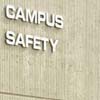The FBI and Secret Service Issue New Guidance on Addressing School Violence and Active Shooters

August 2018
Number 38
The Federal Bureau of Investigations (FBI) and the United States Secret Service's National Threat Assessment Center (NTAC) have released two important documents that offer insight into the pre-attack behavior of shooters and advice to help prevent targeted school violence through the use of threat assessments.
The FBI report
The FBI report, which was issued in June, is part of an FBI initiative to understand why shootings in confined and populated areas, like schools, occur and how they can be prevented. The report attempts to identify specific pre-attack behaviors in order to help law enforcement, school officials, and others better identify, assess and manage individuals who may be on a path to violence.
The report makes 10 key findings. Notable among them as they relate to schools:
The NTAC Guide
NTAC is a branch of the Secret Service that conducts research, training, and consultation on threat assessments to prevent non-random acts of targeted violence. The NTAC guide, released in July, is the first phase of a federal initiative to provide updated research and guidance regarding prevention of school-based violence. Its purpose is to provide a model threat assessment process for schools, where the goal of threat assessment is (1) to identify students of concern, (2) assess their risk for engaging in violence or other harmful activities, and (3) identify intervention strategies to manage that risk. The guide provides a multi-step process for creating a comprehensive, targeted violence prevention plan that achieves this goal. The steps include:
Takeaways
Both documents are important new resources in addressing the unfortunate reality of violence in schools. School officials should consider the documents' recommendations in conjunction with the annual school safety plan process, which includes a threat assessment component. Officials, however, should keep in mind that many of the recommendations in the report and guide may be subject to federal or state legal requirements, such as state law limits on school monitoring of student social media activity.
Finally, Assembly Bill (AB) 1747, which is making its way through the state Legislature, would make related changes to the requirements for school safety plans. In its current form, the bill would require schools to perform annual active shooter drills and require the tactical response portion of safety plans to include specific procedures for gun incidents at schools and school-related activities. Additionally, AB 1747 would mandate charter schools to develop comprehensive school safety plans. Lozano Smith is actively monitoring this legislation and will be prepared to offer specific guidance if it becomes law.
The FBI report, titled A Study of Pre-Attack Behaviors of Active Shooters in the United States Between 2000 and 2013, and NTAC operational guide, titled Enhancing School Safety Using a Threat Assessment Model: An Operational Guide for Preventing Targeted School Violence, can be found on the Public Safety Practice Group page of our website.
For more information about these new resources, legal requirements for school safety plans, or other school safety issues, please contact the authors of this Client News Brief or an attorney at one of our eight offices located statewide. You can also visit our website, follow us on Facebook or Twitter or download our Client News Brief App.
Number 38
The Federal Bureau of Investigations (FBI) and the United States Secret Service's National Threat Assessment Center (NTAC) have released two important documents that offer insight into the pre-attack behavior of shooters and advice to help prevent targeted school violence through the use of threat assessments.
The FBI report
The FBI report, which was issued in June, is part of an FBI initiative to understand why shootings in confined and populated areas, like schools, occur and how they can be prevented. The report attempts to identify specific pre-attack behaviors in order to help law enforcement, school officials, and others better identify, assess and manage individuals who may be on a path to violence.
The report makes 10 key findings. Notable among them as they relate to schools:
- The 63 active shooters examined did not appear to be uniform in any way such that they could be readily identified prior to attacking based on demographics alone.
- Active shooters averaged four to five pre-attack observable, concerning behaviors (e.g., strange interpersonal interactions, recklessness, violent media usage, impulsivity, firearm behavior, and physical aggression).
- Active shooters under age 18 were more likely to have these concerning behaviors observed by student peers and teachers than their own family members at home.
- The most common response by an individual observing a concerning behavior was to either approach the eventual shooter directly or do nothing.
The NTAC Guide
NTAC is a branch of the Secret Service that conducts research, training, and consultation on threat assessments to prevent non-random acts of targeted violence. The NTAC guide, released in July, is the first phase of a federal initiative to provide updated research and guidance regarding prevention of school-based violence. Its purpose is to provide a model threat assessment process for schools, where the goal of threat assessment is (1) to identify students of concern, (2) assess their risk for engaging in violence or other harmful activities, and (3) identify intervention strategies to manage that risk. The guide provides a multi-step process for creating a comprehensive, targeted violence prevention plan that achieves this goal. The steps include:
- Forming a multidisciplinary threat assessment team;
- Defining prohibited and concerning behaviors;
- Establishing a central reporting mechanism;
- Determining the threshold for law enforcement intervention;
- Establishing assessment procedures;
- Developing risk management options;
- Creating and promoting a safe school climate; and
- Providing training to all stakeholders.
Takeaways
Both documents are important new resources in addressing the unfortunate reality of violence in schools. School officials should consider the documents' recommendations in conjunction with the annual school safety plan process, which includes a threat assessment component. Officials, however, should keep in mind that many of the recommendations in the report and guide may be subject to federal or state legal requirements, such as state law limits on school monitoring of student social media activity.
Finally, Assembly Bill (AB) 1747, which is making its way through the state Legislature, would make related changes to the requirements for school safety plans. In its current form, the bill would require schools to perform annual active shooter drills and require the tactical response portion of safety plans to include specific procedures for gun incidents at schools and school-related activities. Additionally, AB 1747 would mandate charter schools to develop comprehensive school safety plans. Lozano Smith is actively monitoring this legislation and will be prepared to offer specific guidance if it becomes law.
The FBI report, titled A Study of Pre-Attack Behaviors of Active Shooters in the United States Between 2000 and 2013, and NTAC operational guide, titled Enhancing School Safety Using a Threat Assessment Model: An Operational Guide for Preventing Targeted School Violence, can be found on the Public Safety Practice Group page of our website.
For more information about these new resources, legal requirements for school safety plans, or other school safety issues, please contact the authors of this Client News Brief or an attorney at one of our eight offices located statewide. You can also visit our website, follow us on Facebook or Twitter or download our Client News Brief App.
As the information contained herein is necessarily general, its application to a particular set of facts and circumstances may vary. For this reason, this News Brief does not constitute legal advice. We recommend that you consult with your counsel prior to acting on the information contained herein.






